Designing with Care: Growing Enzyme Alongside aetherAI's Products
- Allen Chen
- 7月17日
- 読了時間: 3分
When I joined aetherAI as a product design intern, I stepped into a fast-evolving company where AI is transforming medical imaging. What excited me most wasn’t just the advanced technology, but the foundation beneath it—the design system we call Enzyme.
Design systems are often seen as behind-the-scenes infrastructure, quietly powering the interfaces we use every day. But as I quickly learned, they’re also vessels for care, craft, and collaboration. Enzyme had been steadily growing alongside our products, and during my internship, I had the chance to help shape its next chapter.
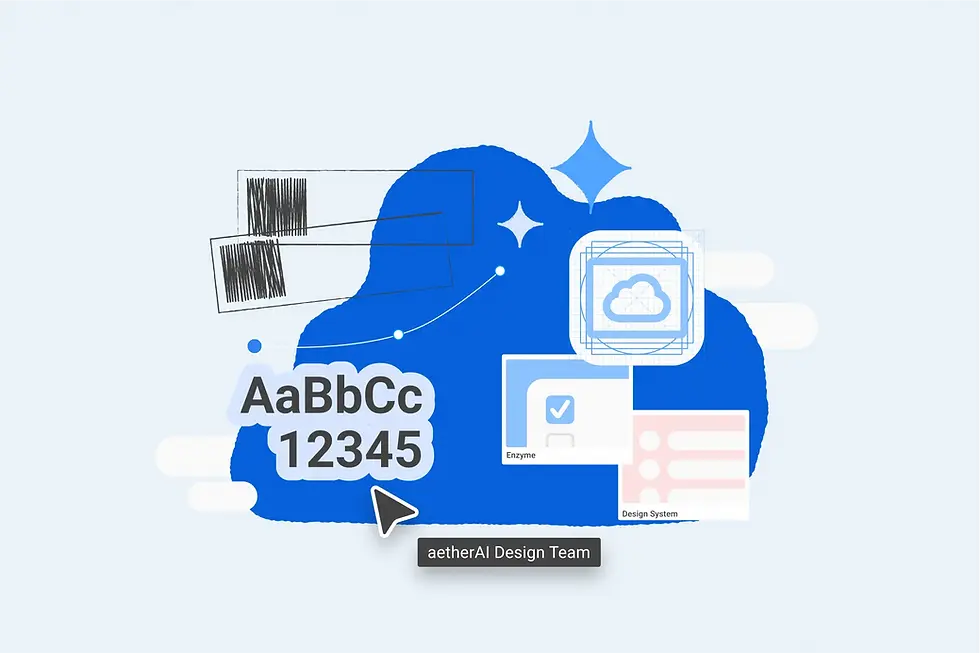
Designing for Growth
My main focus was rebuilding and expanding core components in Enzyme—menu, side navigation, label, tag, badge, and checkbox. They’re the connective tissue of every experience we deliver. And as our products scaled, our components had to scale with them.
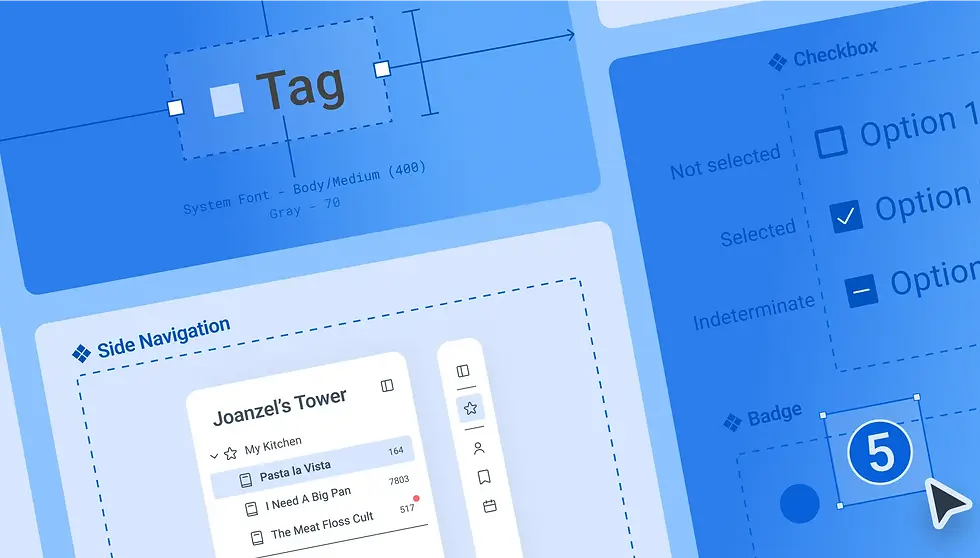
One of the key components I worked on was the Menu Item. It is used widely across aetherAI products—from modals to dropdowns to navigation panels—and each one places different demands on flexibility, alignment, interaction, and visual clarity. The original version served the team well, shaped by the needs of its time. But as our platform matured and usage scenarios diversified, we needed the component to grow with us.
I redesigned the menu item with flexibility at its core. Then, I put it to the test.
Validating with Designers
To make sure the updated Menu Item actually improved the design experience, I ran a small usability test with four of our product designers. I asked them to complete the same task—building a checkbox menu modal—using both the legacy components and the newly updated ones.
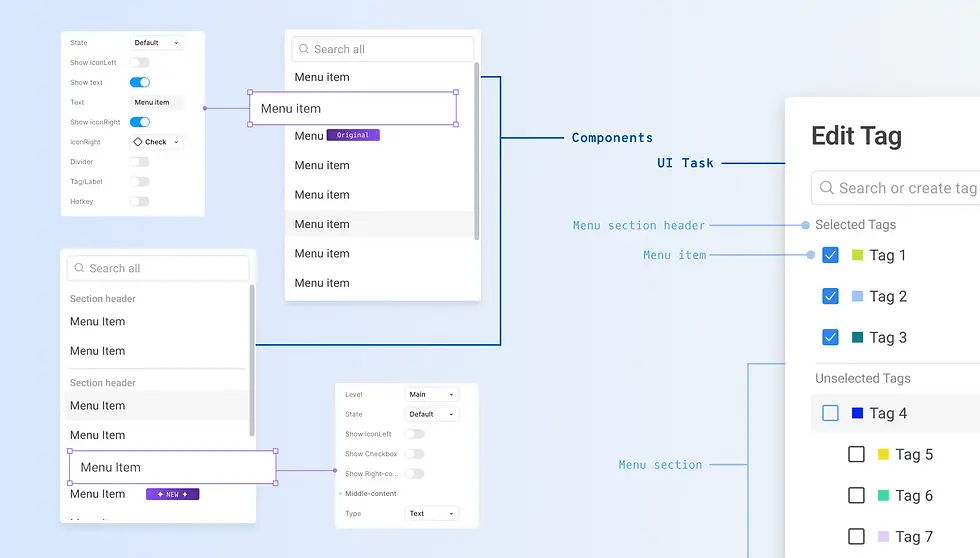
The results were clear: on average, designers using the updated component completed the task 34% faster.
But the feedback went deeper than numbers. One designer told me,
“What stood out was that I could just use it as-is. No workaround, no detour — it scaled to what I needed.” - Product Designer A
Another added,
“Being able to stay in-system the whole way through helps me trust the system more.” - Product Designer B
The time savings weren’t just about speed. In our field, even small gains in clarity and consistency can cascade into faster decision-making, better focus, and fewer implementation errors. It was rewarding to see how thoughtful systems work could ripple outward.
Learning from the Front Line
While validating design efficiency through testing was straightforward, understanding the engineering impact required a different lens. So I sat down with one of our front-end developers to understand how the components show up in their workflow.
One insight stood out clearly: clarity in documentation isn’t a “nice-to-have,” it’s a multiplier. When the documentation is complete and explicit, developers don’t need to spend time guessing, reverse-engineering the design, or pinging the designer for answers.
“If everything’s laid out in the doc, I can just build. No back-and-forth, no guessing. That saves hours.” - Front-end Developer A
He said it with a grin, the kind that briefly lit up his face behind black-rimmed glasses, as if relieved just thinking about it. It reshaped my view of specs—not as one-way instructions, but as mutual understandings we build together. A well-documented component removes friction from the design-to-code pipeline. It shows respect for your teammates’ time.
And maybe most importantly, it signals to engineers that their work—and time—was considered from the start.
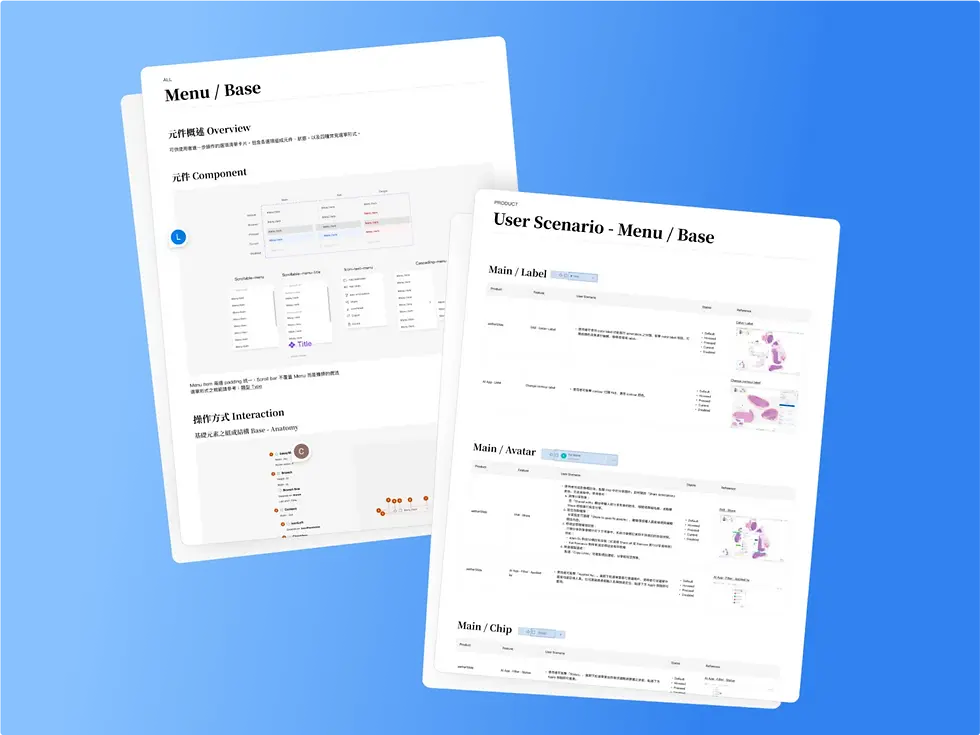
What Building a System Built in Me
This journey taught me something I’ll carry forward:
The best systems are made with care—for the people we build alongside, and the ones who will build after us.
A design system is about making good decisions repeatable. It’s about removing friction. It’s about giving teams the space to move, create, and grow—together.
And most importantly, it’s about recognizing that we don’t design for ourselves. We design for each other.
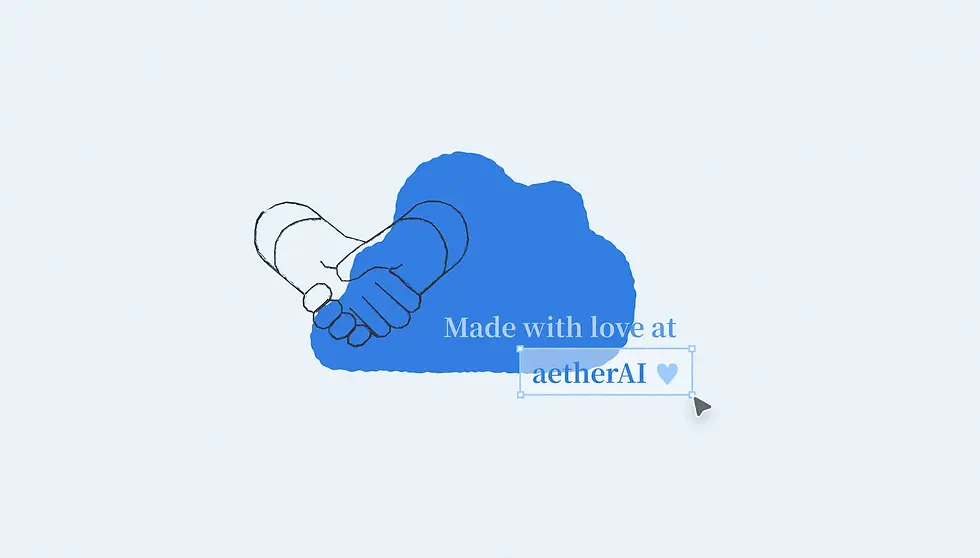
Looking Ahead
As my internship ends, I’m joining aetherAI as a full-time product designer. My focus will shift from building components to building flows— using the very components I helped refine during my time on Enzyme. That full-circle moment means a lot to me. I’ll be experiencing our design system not just as a contributor, but as a user. And I’ll continue improving it with the same care.
Because like Jony Ive once said,
“What we make stands testament to who we are.”
At aetherAI, where design supports tools used by medical professionals in their everyday work—whether diagnosing, researching, or teaching—that spirit of care is a responsibility. And more and more, it feels like a privilege. If anyone smiles because something just feels right—that’s our greatest reward.
That, to me, is the quiet power of good design.
And that’s the kind of team I’m proud to grow with.
Are you looking for a team that collaborates seamlessly and a stage to showcase your talents? Check if aetherAI has suitable job openings for you now!







コメント